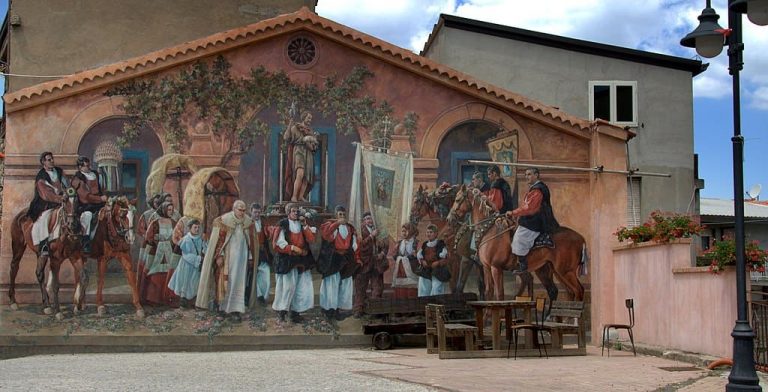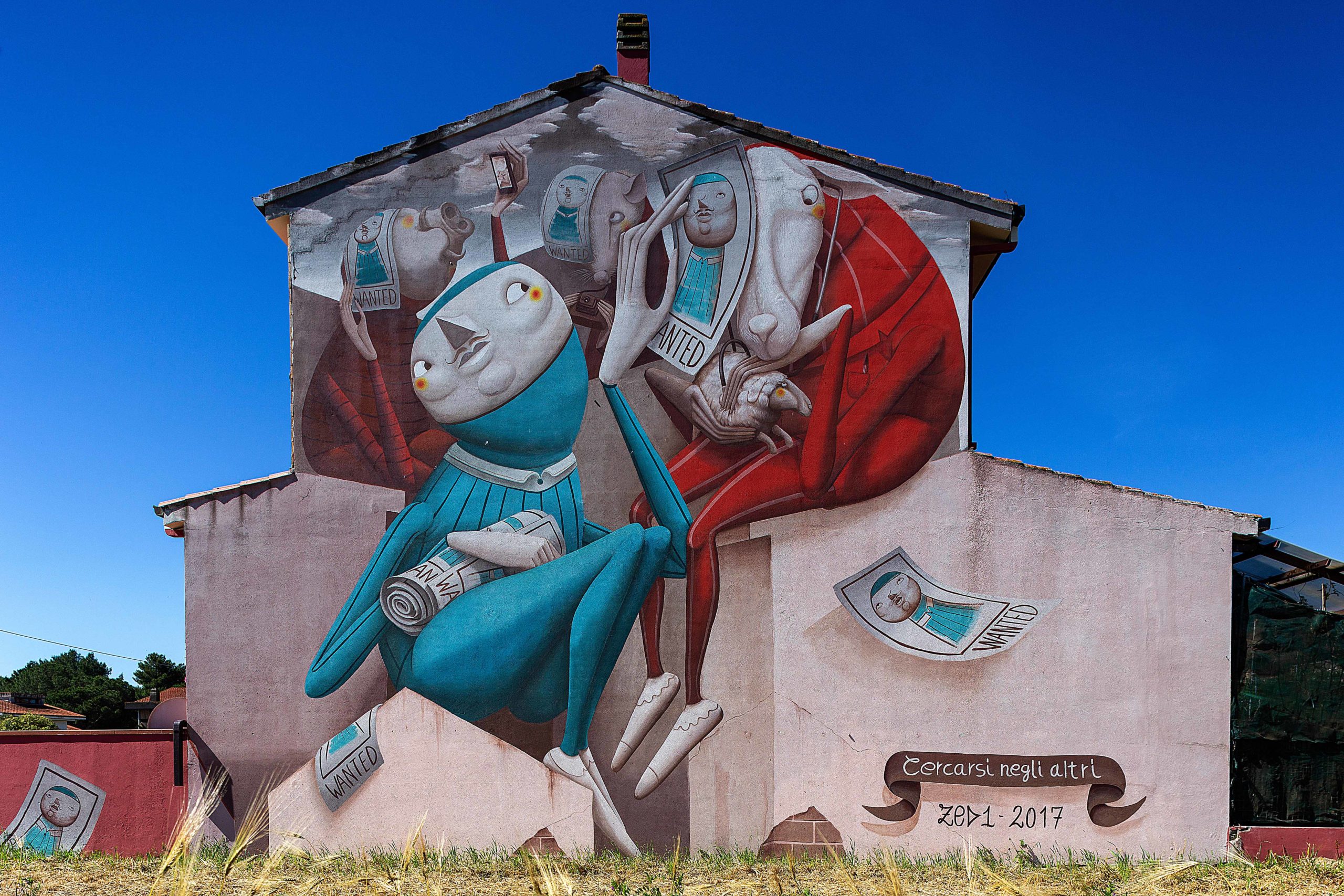Murals and street art: Sardinia's walls like an open-air museum
La Sardinia is not only sea and breathtaking beaches: there is a colourful soul that manifests itself through its murals and the street art. Strolling through the villages of theisland means living scenes of everyday life, stories, protests and traditions painted on the walls, turning entire countries into a open-air museum. In this article you will discover why it is worth undertaking a itinerary between the walls of Sardinia, know the countries to visit in Sardinia dedicated to the muralism and be inspired by the street art works that tell the authentic heart of culture Sardinian.
Murals in Sardinia: a major artistic phenomenon
The artistic phenomenon of murals in Sardinia originated in a small hamlet and has over time become an identifying element of many communities. I Sardinian murals are more than just decorations: they are scenes of lifehistorical memory, social denunciation and visual poetry at the same time. Walking among the urban centres you will be faced with works painted on walls of houses, shops and squares that transform the villages into a colouring palette.
This art form is also a major artistic phenomenon because he was able to unite local and international artistscreating a dialogue between tradition and modernity. Le works of street art not only decorate but bring picturesque views back to lifebringing to light scenes of contemporary life coexisting with historical moments and ancient symbols.

Orgosolo and its murals
The beating heart of the muralism is undoubtedly Orgosolothe barbaric village which became the capital of muralism. I Orgosolo murals arise from a strong cry of protest and suffering and have evolved into a universal language. Here you can really hear the cry of protest of the population, marked by social and cultural ferment.
The walls of the village are decorated with scenes of rural life, characters in traditional dresshistorical moments and political reflections that tell the story of the community's past and present. The works were created by local artists but also from various artists from other parts of the world, such as Francesco Del Casinocontributing to making the town of Orgosolo an international symbol.
San Sperate and the legacy of Pinuccio Sciola
If Orgosolo is the capital of muralism, San Sperate is the laboratory country. Here the master Pinuccio Sciola gave birth to a country museummaking the entire village a of open-air art. His works, together with the many murals painted by citizens and works by local artistshave turned the country into a cultural crossroads.
Every wall becomes an occasion for reflection, every square tells scenes of everyday life and the whole creates a lively centre of the Campidanese countryside. Walking around San Sperate you will find yourself immersed in a artistic phenomenon unique, where art and everyday life mingle in an immense palette to colour.
Tinnura and its murals
The small village of Tinnura is a country museum in the heart of the Sardinia region. Here the murals of Tinnura tell moments of rural lifework in the fields, traditions and popular festivals. These are works painted on the walls of villages surrounded by vineyards offering visitors an authentic atmosphere.
Each mural is a tale that winds through the lanes, creating suggestive paintings adorning streets and squares. The particularity of Tinnura is that it has welcomed a series of murals made by various artists that have contributed to strengthening the sense of community and the beauty of the village.
San Gavino Monreale and the new scene
The village of San Gavino Monrealeknown simply as San Gavinohas in recent years become a reference point for the street art in Sardinia. Here works by local and international artists have turned the country into a gallery open-air with works painted on walls of large dimensions.
The town is now famous for its monumental murals that tell of both the Sardinian nature is scenes of contemporary life coexist with more modern subjects, capable of attracting younger and street art lovers. It is a artistic phenomenon which shows how the street art does not belong only to the past, but is an ever-evolving language.

Villamar and Serramanna
In centre of the Campidanese countrysidethe villages of Villamar e Serramanna hold numerous murals depicting scenes of life linked to the community. Here the works painted on walls tell scenes of everyday lifereligion, tradition and folklore.
Also these Sardinian villages are a perfect example of how the Sardinian murals manage to keep the cultural and historical identity of places alive, turning them into art galleries diffuse. Walking through their alleys means discovering picturesque views in decadence brought back to life thanks to the artists' colours.
Fonni and Barbagia
The village of Fonniin the heart of the Barbagiais rich in murals that represent the strong link with the mountains and tradition. The walls tell the story of everyday life, legends and symbols of the culture Sardinian. There is no shortage of references to the carnival with the famous carnival maskstestifying to an indissoluble link with popular roots.
To visit Fonni is to immerse oneself in a barbaric village which strongly expresses its identity through the colours and images that populate the walls of the village.
Other places and works of the street
In addition to the most famous centres, many other villages hold works of street art extraordinary. From Cagliari with its lively neighbourhoods, to Sassarithrough Oristano and up to small centres such as San Nicolò d'Arcidano o i walls of Palauthe entire Sardinia region is a colourful mosaic that tells stories.
Every place is different, every mural is unique, but all together they make up a heritage that makes the island truly a jewel for those who want explore its most authentic soul.
Conclusion: Murals and Street Art in Sardinia
In Sardinia the murals and street art are much more than an ornament. They are a artistic phenomenon that speaks of history, identity, resistance and hope. Visiting villages means coming into contact with communities, with their memory and with an artistic heritage that makes theisland a country museum widespread.
Anyone who decides to embark on a journey of discovery of the murals in Sardinia will live an unforgettable experience that will remain imprinted like the colours on the walls of its villages.
FAQ
What are the most famous villages for murals in Sardinia?
The best known are Orgosolo, San Sperate, Tinnura, San Gavino Monreale, Villamar e Fonnibut many other villages hold true treasures.
Why is Orgosolo so important for muralism?
Because his murals are born from a strong cry of protest and suffering and represent the voice of a people in search of identity and justice.
Who is Pinuccio Sciola and what role did he play?
Pinuccio Sciola is a great Sardinian artist who has transformed San Sperate in a country museum and created an open-air art workshop.
What do the murals of Tinnura tell us?
They tell of rural life, work in the fields, folk festivals and community traditions Sardinian.
What is the difference between the murals in Orgosolo and those in San Gavino?
Those of Orgosolo are linked to social and political protest, while those of San Gavino represent the new scene of the street art in Sardiniawith modern and monumental works.
Can you visit the murals for free?
Yes, murals are painted on village walls and are freely accessible to all visitors.
When is it best to visit the mural villages?
Spring and autumn are the ideal periods: pleasant temperatures and less crowding make it possible to better enjoy the details of the works.
Are there organised routes to see the murals?
Yes, many guides and associations organise tour to discover the main murals in Sardinia.
Are murals in Sardinia only linked to the past?
No, today there are also scenes of contemporary life and works of street artist international dialogue with tradition.
Why are murals so important for Sardinian identity?
Because they represent the roots, struggles and hopes of communities, becoming a mirror of history and culture Sardinian.

